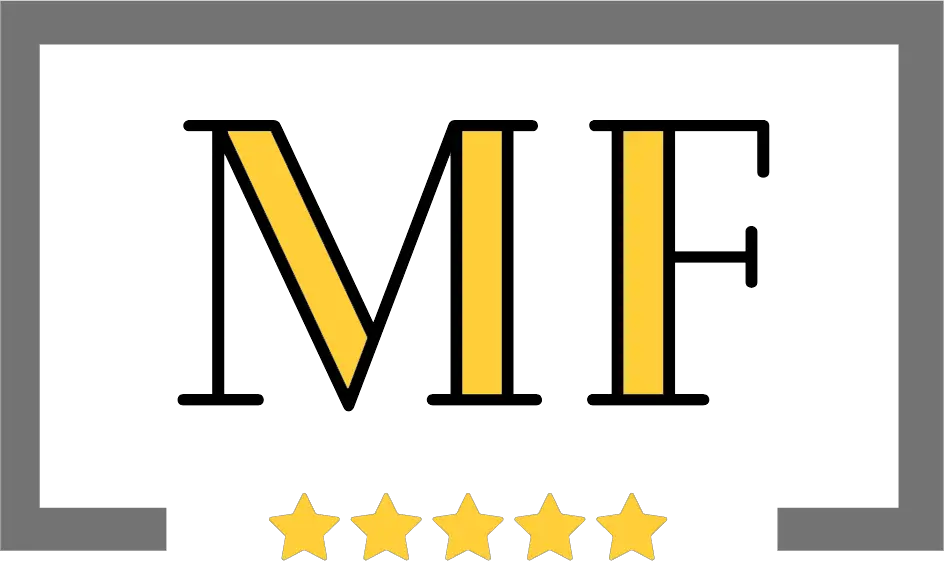Details
Insurance policy
Insurance policies are essential financial tools designed to protect individuals and businesses from unexpected losses. At their core, insurance policies serve as contracts between the policyholder and the insurer, where the insurer agrees to compensate for specific potential losses in exchange for premiums paid by the policyholder. This arrangement is fundamentally grounded in the principle of risk management, which aims to minimize the financial impact of unforeseen events.
The primary purpose of insurance is to provide a safety net that mitigates the financial burden resulting from various risks. These risks can range from minor inconveniences, such as a car repair, to significant life-altering events like a medical emergency or the destruction of property due to natural disasters. By transferring the financial risk to an insurance company, individuals and businesses can achieve a sense of security and stability, knowing that they are protected against substantial economic setbacks.
There are several types of insurance policies available, each tailored to address specific needs and risks. Health insurance policies, for instance, are designed to cover medical expenses, ensuring that policyholders have access to necessary healthcare without the prohibitive costs. Life insurance provides financial support to beneficiaries in the event of the policyholder’s death, helping to secure their financial future. Auto insurance protects vehicle owners from financial liabilities arising from accidents, theft, or damage, while home insurance covers potential losses related to one’s residence, including damages from fire, theft, or natural disasters.
Understanding the various insurance options and their benefits is crucial for making informed decisions about coverage. Each type of insurance plays a vital role in safeguarding different aspects of our lives, providing peace of mind and financial resilience. Consequently, having appropriate insurance coverage is not just a matter of legal obligation or financial prudence; it is a cornerstone of responsible risk management and financial planning.
Types of Insurance Policies
Insurance policies are integral to safeguarding against unforeseen events and financial uncertainties. Understanding the various types of insurance policies, their primary features, benefits, and common exclusions is essential for making informed decisions. This section provides a detailed overview of the main types of insurance policies, including health insurance, life insurance, auto insurance, homeowner’s insurance, and specialty insurance such as travel or pet insurance.
Health Insurance: Health insurance covers medical expenses incurred due to illnesses or injuries. Policies typically include benefits like hospitalization, prescription drugs, and preventive care. Exclusions often involve cosmetic surgeries, experimental treatments, and pre-existing conditions, depending on the policy specifics.
Life Insurance: Life insurance provides a financial safety net to beneficiaries upon the policyholder’s death. There are two primary types: term life insurance, which offers coverage for a specific period, and whole life insurance, which provides lifelong coverage. Benefits include death benefits, cash value accumulation (in whole life policies), and potential tax advantages. Common exclusions might include death due to risky activities or suicide within a specified period.
Auto Insurance: Auto insurance covers damages and liabilities arising from car accidents. Policies generally include liability coverage, collision coverage, and comprehensive coverage. Benefits can extend to medical payments and uninsured motorist protection. Exclusions typically revolve around intentional damage, driving without a valid license, and using the vehicle for commercial purposes without proper endorsement.
Homeowner’s Insurance: Homeowner’s insurance protects against damages to one’s home and personal property. It often covers events like fire, theft, and natural disasters. Policies may also include liability protection against accidents occurring on the property. Common exclusions include damage from floods, earthquakes, and neglect-related issues, necessitating additional policies or endorsements for comprehensive coverage.
Specialty Insurance: Specialty insurance caters to specific needs, such as travel insurance or pet insurance. Travel insurance covers trip cancellations, medical emergencies abroad, and lost luggage. Pet insurance helps cover veterinary expenses for pets. These policies provide tailored benefits but often exclude pre-existing conditions and certain high-risk activities.
Understanding the various types of insurance policies and their specific features, benefits, and exclusions empowers individuals to choose the right coverage for their unique needs, ensuring comprehensive protection and peace of mind.
Key Components of an Insurance Policy
When navigating the world of insurance, understanding the key components of an insurance policy is crucial. Whether you’re dealing with health, auto, or home insurance, grasping these fundamental terms can significantly impact your coverage and costs.
The premium is the amount you pay to the insurance company, typically on a monthly or annual basis, to maintain your coverage. This cost can vary based on factors like the type of insurance, the amount of coverage, and your personal risk factors. A higher premium generally indicates more comprehensive coverage, while a lower premium might mean less protection.
The deductible is the amount you must pay out-of-pocket before your insurance company begins to cover expenses. For example, if your auto insurance has a $500 deductible and you incur $1,500 in damages, you would pay the first $500, and the insurance would cover the remaining $1,000. Opting for a higher deductible can lower your premium but increases your financial responsibility in the event of a claim.
The policy limit refers to the maximum amount an insurer will pay under a policy for a covered loss. For instance, a health insurance policy might have a $1 million lifetime limit, meaning the insurer would cover up to $1 million in medical expenses over the life of the policy. Exceeding this limit would require you to pay any additional costs out-of-pocket.
Exclusions are specific conditions or circumstances that are not covered by the insurance policy. Common exclusions might include natural disasters in standard home insurance or pre-existing conditions in health insurance. It’s crucial to read and understand these exclusions to avoid unexpected out-of-pocket expenses.
Riders, also known as endorsements or amendments, are additional provisions that can be added to your policy to modify its terms or coverage. For example, you might add a rider to a life insurance policy to cover accidental death or critical illness. Riders allow you to customize your coverage to better meet your needs.
By understanding these key components—premium, deductible, policy limit, exclusions, and riders—you can make more informed decisions about your insurance policies, ensuring you select the coverage that best suits your needs and financial situation.
How to Choose the Right Insurance Policy
Selecting the right insurance policy is a critical decision that requires careful consideration of various factors. The first step is to assess your personal needs. Identify the types of coverage that are essential for your situation, whether it is health, life, auto, or home insurance. Understanding your coverage requirements will help you narrow down the options available.
Next, compare different policies from various insurance providers. Pay close attention to the coverage details, premiums, deductibles, and limits. It is important to read the fine print to ensure that you understand what each policy entails. Additionally, consider the financial stability of the insurance providers. Reliable companies usually have strong financial ratings, which indicate their ability to pay out claims.
Understanding the terms and conditions of a policy is paramount. Make sure you are aware of any exclusions, restrictions, and the process for filing claims. If the policy language is complex, do not hesitate to seek clarification from the insurance company or a professional advisor. It is also beneficial to read reviews and ratings from other policyholders to gauge their experiences with the provider.
Seeking professional advice can be invaluable when choosing an insurance policy. Insurance brokers or financial advisors can provide personalized recommendations based on your specific needs and circumstances. They can also help you navigate through the myriad of options and identify the best policy for your requirements.
Lastly, take your time to make an informed decision. Rushing into a policy without thorough research can lead to inadequate coverage or higher costs in the long run. By carefully evaluating your needs, comparing policies, assessing the financial stability of providers, and understanding the policy terms, you can choose an insurance policy that offers the best protection and peace of mind.
The Process of Purchasing an Insurance Policy
Purchasing an insurance policy involves several key stages that ensure you obtain the coverage that best suits your needs. The initial step is conducting thorough research to understand the different types of insurance policies available. This phase includes identifying your specific requirements, such as coverage for health, life, home, or auto insurance. Utilize online resources, consult with insurance brokers, and seek recommendations from trusted sources to gather comprehensive information.
Once you have a clear understanding of your needs, the next step is obtaining quotes from multiple insurance providers. This can be done through online comparison tools, directly contacting insurers, or working with an independent insurance agent. Comparing quotes is crucial as it helps you evaluate different options and select a policy that offers the best value for your premium.
After selecting a suitable policy, the application process begins. This involves filling out detailed forms that request personal and financial information. Honesty is paramount during this stage. Providing accurate information ensures that the policy you receive is appropriate and that claims are processed smoothly. Misrepresentation or withholding information, particularly regarding pre-existing conditions, can lead to denial of coverage or claims in the future.
The application is then subjected to the underwriting process, where the insurer assesses the risks involved in providing coverage. This may involve further inquiries or medical examinations, depending on the type of insurance. The underwriter evaluates the information to determine the terms and conditions of the policy, including premiums and coverage limits.
Once underwriting is complete, and the insurer approves your application, the finalization of the purchase takes place. This involves reviewing the policy documents thoroughly to understand the coverage details, exclusions, and any additional terms. After signing the agreement and making the initial premium payment, the policy becomes active, providing you with the agreed-upon coverage.
In conclusion, purchasing an insurance policy is a multi-step process that requires careful research, honest disclosure, and thorough review. By following these steps, you can secure an insurance policy that meets your needs and provides peace of mind.
Understanding Policy Renewal and Cancellation
Policy renewal is a critical aspect of maintaining continuous insurance coverage. As the term of an insurance policy nears its end, the policyholder receives a renewal notice from the insurer. This notice typically includes details about the new premium, any changes to the policy terms, and the renewal date. It is crucial for policyholders to review this information carefully to ensure the coverage still meets their needs and to clarify any modifications. If the policyholder agrees to the new terms, the renewal process can often be completed effortlessly through online portals or by contacting the insurance company directly.
On the other hand, understanding the reasons behind policy cancellation is equally important. An insurer might cancel a policy for various reasons, such as non-payment of premiums, fraudulent claims, or significant changes in the risk profile of the insured. Policyholders also have the right to cancel their insurance at any time, although doing so can lead to potential penalties or a loss of coverage. Cancellation by the policyholder typically requires a written notice to the insurer and may involve a short-rate cancellation fee.
The implications of policy cancellation can be significant. For instance, a gap in insurance coverage can leave an individual or a business vulnerable to financial risks. Additionally, frequent cancellations might affect one’s ability to secure future insurance at favorable rates. Therefore, it is advisable to have a new insurance policy lined up before canceling the current one to avoid any lapse in coverage.
Switching to a new insurance provider often involves comparing quotes, evaluating the benefits and costs of different policies, and ensuring that the new policy provides equivalent or better coverage than the previous one. It is also beneficial to check for any potential discounts or incentives offered by the new insurer for switching. This due diligence can help policyholders make informed decisions and maintain continuous protection.
Filing an Insurance Claim
Filing an insurance claim is a crucial process that policyholders must understand to ensure proper compensation for their losses. The first step after an incident is to document everything meticulously. This includes taking photographs of the damage, gathering witness statements if applicable, and keeping receipts or records of any expenses incurred due to the incident. Comprehensive documentation is essential as it forms the foundation of your claim.
Next, promptly contact your insurance company to report the incident. Most insurance policies have a time limit for filing claims, so it is imperative to act quickly. During this initial communication, provide a clear and concise account of the incident, supported by your collected documentation. This will help the insurance company assess the situation accurately and expedite the claims process.
Once the claim is reported, the insurance company will assign an adjuster to your case. The adjuster will review your documentation, inspect the damage, and possibly conduct interviews to validate the claim. Cooperation with the adjuster is vital; ensure that you provide them with all requested information promptly and accurately. Transparency and clear communication can significantly streamline the evaluation process.
Throughout the claims process, maintain a record of all communications with your insurance company. This includes keeping copies of emails, letters, and notes from phone conversations. This documentation can be crucial if any disputes arise regarding the claim. Additionally, be proactive in following up with the insurance company to stay informed about the status of your claim.
To increase the likelihood of a successful claim, familiarize yourself with your policy’s terms and conditions. Understanding what is covered and any exclusions that may apply will help set realistic expectations. If necessary, seek assistance from a legal advisor or a public adjuster to navigate complex claims. Their expertise can be invaluable in ensuring that you receive the compensation you are entitled to.
By adhering to these steps and maintaining diligent communication with your insurance company, you can effectively manage the claims process and work towards a satisfactory resolution.
Common Mistakes to Avoid with Insurance Policies
When navigating the complexities of insurance policies, individuals often encounter several common pitfalls that can lead to financial inefficiencies or inadequate coverage. One of the most frequent mistakes is underinsuring. Many policyholders might opt for lower coverage limits to save on premiums, but this can leave them vulnerable in the event of significant loss. It is crucial to assess accurately the value of assets being insured and to ensure that the policy provides sufficient coverage to protect against potential risks.
Another common error is failing to read the fine print. Insurance policies are often laden with jargon and detailed clauses that can impact coverage. Overlooking these details can result in unexpected exclusions or limitations when it comes time to file a claim. To avoid this, it is advisable to thoroughly review the terms and conditions of the policy, and seek clarification from the insurer on any ambiguous points.
Not updating insurance policies to reflect life changes is another significant mistake. Major life events such as marriage, the birth of a child, or purchasing a new home can alter insurance needs. It is essential to revisit and update insurance policies regularly to ensure they align with current circumstances. This proactive approach ensures that coverage remains adequate and relevant.
Neglecting to compare insurance rates regularly is another oversight that can result in overpaying for coverage. Insurance markets are competitive, and rates can vary widely among providers. Regularly shopping around and comparing rates can help identify more cost-effective options, ensuring that policyholders receive the best value for their premiums.
Finally, misunderstanding coverage limits can lead to inadequate protection. Each insurance policy has specific limits on the amount it will pay out for various types of claims. It is vital to understand these limits and to evaluate whether they are sufficient to cover potential losses. If necessary, consider increasing coverage limits or adding riders to address any gaps.
By being aware of these common mistakes and taking proactive steps to avoid them, individuals can ensure that their insurance policies provide comprehensive and effective protection tailored to their unique needs.























There are no reviews yet.